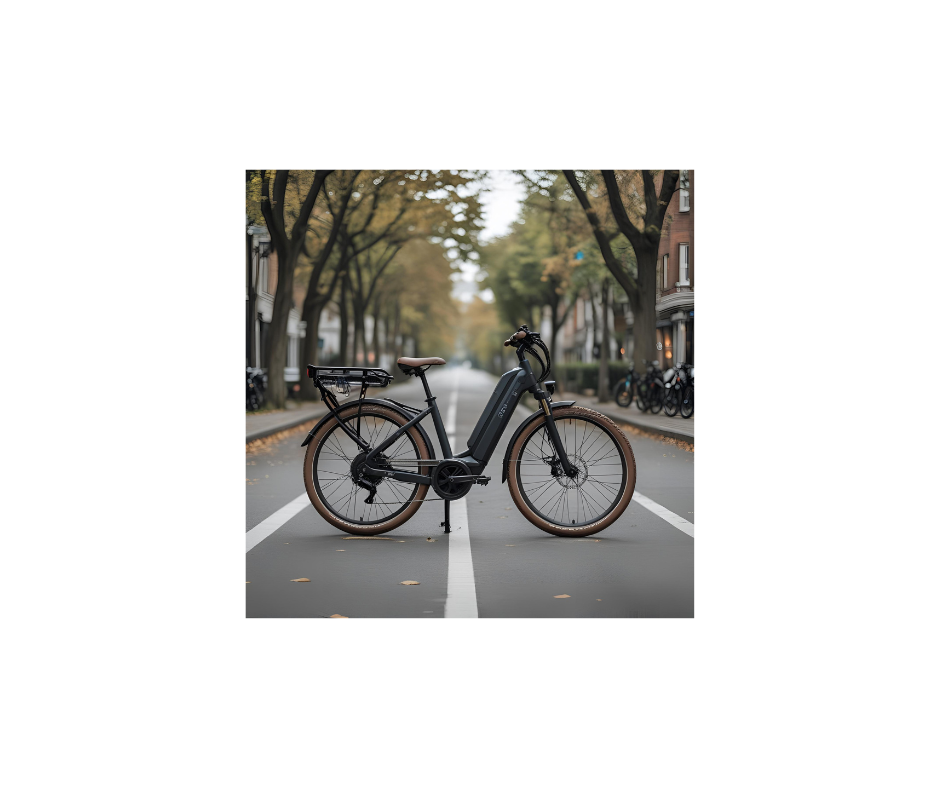E-Bike Buying Guide 2024: How to Choose Your Perfect Electric Bike
The popularity of electric bicycles continues to grow rapidly. Whether you're looking for a greener way to commute, an alternative to cars in the city, or an exciting new way to explore nature, e-bikes offer something for everyone. This E-Bike Buying Guide 2024 will walk you through the essentials of choosing the right bike, from electric bike types to motors, batteries, price ranges, and safety considerations.
Types of E-Bikes
Different riders have different needs. Understanding electric bike types is the first step in your electric bike buying guide journey.
- City/Commuter E-Bikes: Designed for daily commuting with comfort, fenders, and racks for carrying bags.
- Mountain E-Bikes: Built for off-road trails, featuring suspension systems and powerful motors.
- Road E-Bikes: Lightweight with narrow tires, optimized for speed and long-distance rides.
- Cargo E-Bikes: Strong frames and large carrying capacity, perfect for families or deliveries.
- Folding E-Bikes: Compact and portable, ideal for commuters who combine cycling with public transit.
Motor Types and Power
The motor is the heart of an e-bike. There are two main motor types:
- Hub Motors: Located in the wheel hub, quieter and more affordable. Great for city riding.
- Mid-Drive Motors: Positioned in the crankset, they provide more torque and better climbing power. Ideal for hilly areas and off-road riding.
Motor Power Ratings
Most e-bikes fall between 250W–750W. Higher wattage means more power, but also more energy consumption. Choose based on your terrain and needs:
- 250W–350W: City commuting, flat roads
- 500W: Mixed terrain, moderate hills
- 750W+: Steep hills, off-road, cargo e-bikes
Battery Capacity and Range
The battery determines how far you can ride on a single charge.
- Capacity: Measured in watt-hours (Wh). Common sizes: 400Wh–700Wh.
- Range: Depends on capacity, motor efficiency, rider weight, terrain, and assist level.
Range Estimates by Battery Size
- 400Wh: 25–40 miles
- 500Wh: 35–55 miles
- 700Wh: 50–80 miles
Price Ranges and Budget
E-bikes vary widely in cost depending on features and brand:
- Entry-Level ($800–$1,500): Basic commuter and folding e-bikes.
- Mid-Range ($1,500–$3,000): Higher capacity batteries, better components, ideal for regular riders.
- Premium ($3,000+): High-performance motors, advanced suspension, top-tier brands.
Test Riding and Buying Tips
- Test Ride Multiple Models: Comfort and handling vary greatly.
- Check Fit: Frame size should match your height.
- Assess Battery Removal: Some models have removable batteries for easier charging.
- Look at Warranty: Ensure good coverage for motor and battery.
- Consider Service: Check local dealer support for your chosen brand.
- Test Different Assist Levels: Make sure the power delivery feels natural.
Legal Requirements and Safety
- Speed Limits: Class 1 & 2 (pedal-assist or throttle, up to 20 mph); Class 3 (pedal-assist, up to 28 mph).
- Helmet Laws: Required in some states for Class 3 e-bikes.
- Local Rules: Always check city regulations for bike lanes and off-road access.
- Age Restrictions: Some jurisdictions have minimum age requirements.
- Registration: May be required in certain areas.
Maintenance and Service
Compared to cars, electric bicycle maintenance is simpler but still important:
- Check tire pressure weekly.
- Lubricate chain every 200 miles.
- Inspect brake pads regularly (e-bikes wear faster due to weight).
- Keep battery charged between 20–80% for longevity.
- Clean the bike regularly, especially after wet rides.
- Check electrical connections and wiring periodically.
Popular E-Bike Brands and Models in 2024
- Rad Power Bikes: Known for affordable, versatile cargo and commuter e-bikes.
- Trek: Premium performance e-bikes with quality components.
- Specialized: Advanced motor systems and lightweight designs.
- Aventon: Stylish urban e-bikes with good value.
- Giant: Reliable global brand with wide range of models.
- Bosch: Leading motor manufacturer with excellent reliability.
- Shimano: Quality components and mid-drive systems.
Use Case Scenarios
Best for Commuters
Folding or city e-bikes with moderate range and comfort features. Look for integrated lights, fenders, and racks.
Best for Fitness Enthusiasts
Road e-bikes with lightweight frames and higher assist speeds. Focus on efficiency and performance.
Best for Families
Cargo e-bikes designed to carry kids, groceries, or heavy loads. Prioritize stability and carrying capacity.
Best for Adventure Riders
Mountain e-bikes with powerful mid-drive motors and suspension. Consider battery range for longer rides.
Key Features to Consider
- Display: LCD or LED displays show speed, battery level, and assist mode
- Lights: Integrated lighting for safety and visibility
- Fenders: Keep you clean in wet conditions
- Racks: For carrying bags, groceries, or cargo
- Suspension: Comfort on rough roads or trails
- Brakes: Hydraulic disc brakes offer better stopping power
Battery Technology and Charging
Understanding battery technology helps make informed decisions:
- Lithium-Ion: Most common, good energy density and lifespan
- Charging Time: Typically 3-6 hours for full charge
- Battery Life: 500-1000 charge cycles before significant degradation
- Removable vs. Integrated: Removable batteries offer flexibility
- Charging Location: Consider where you'll charge the battery
Final Thoughts
This E-Bike Buying Guide 2024 shows that choosing the right electric bicycle depends on your riding style, budget, and lifestyle. With the right motor, battery, and design, an e-bike can transform how you travel, exercise, and explore. Take your time to test ride different models and consider your specific needs before making a decision.
Find Your Perfect E-Bike on Evvalley Marketplace
Ready to start riding? Browse Evvalley Marketplace to explore top e-bike models and discover which electric bicycle fits your lifestyle best.
Compare e-bikes by brand and price, or see safety tips.
